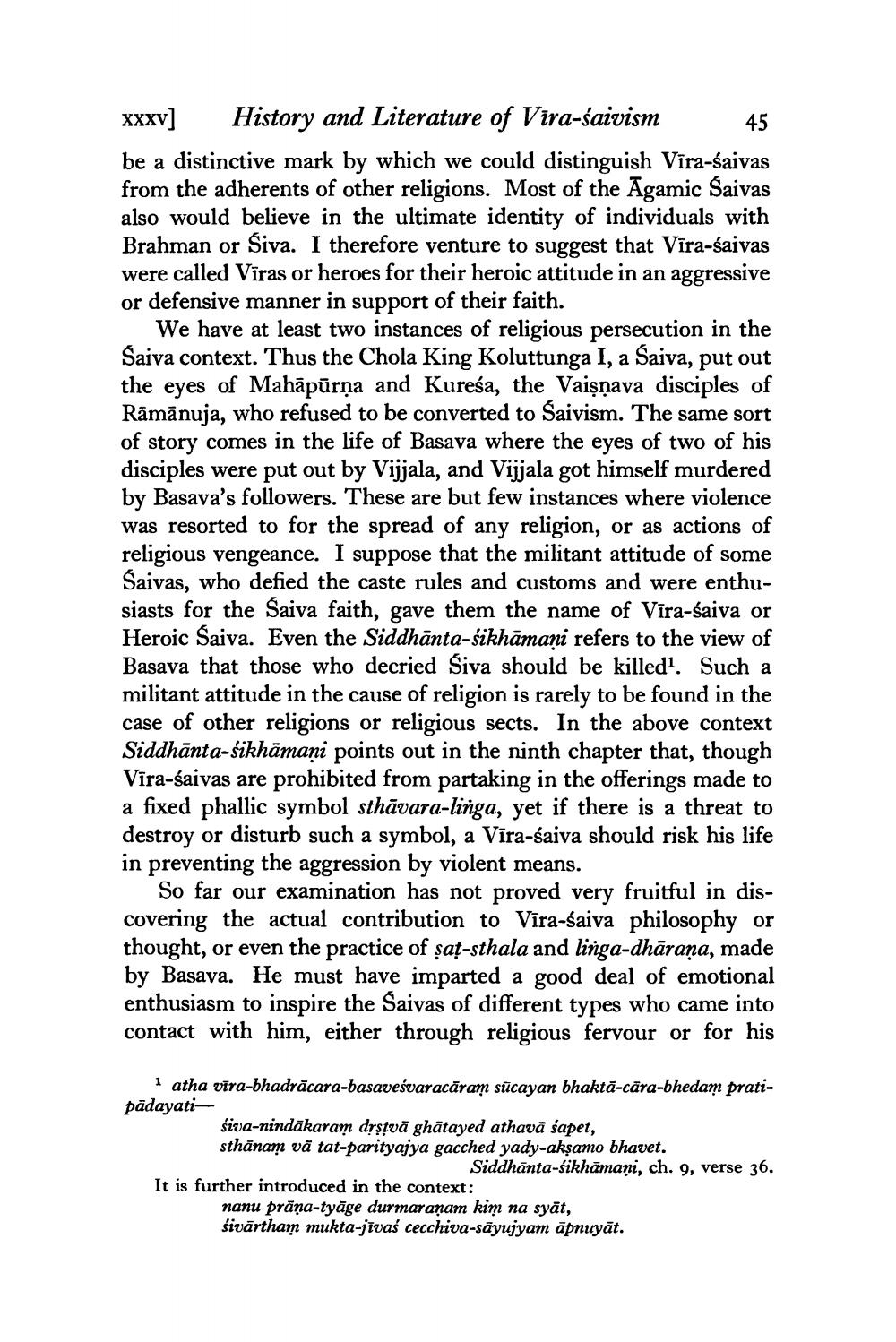________________
XXXV] History and Literature of Vira-saivism 45 be a distinctive mark by which we could distinguish Vira-śaivas from the adherents of other religions. Most of the Agamic Saivas also would believe in the ultimate identity of individuals with Brahman or Siva. I therefore venture to suggest that Vīra-śaivas were called Vīras or heroes for their heroic attitude in an aggressive or defensive manner in support of their faith.
We have at least two instances of religious persecution in the Saiva context. Thus the Chola King Koluttunga I, a Saiva, put out the eyes of Mahāpūrņa and Kureśa, the Vaişnava disciples of Rāmānuja, who refused to be converted to Saivism. The same sort of story comes in the life of Basava where the eyes of two of his disciples were put out by Vijjala, and Vijjala got himself murdered by Basava's followers. These are but few instances where violence was resorted to for the spread of any religion, or as actions of religious vengeance. I suppose that the militant attitude of some Saivas, who defied the caste rules and customs and were enthusiasts for the Saiva faith, gave them the name of Vīra-śaiva or Heroic Saiva. Even the Siddhānta-śikhāmani refers to the view of Basava that those who decried Siva should be killed'. Such a militant attitude in the cause of religion is rarely to be found in the case of other religions or religious sects. In the above context Siddhānta-sikhāmani points out in the ninth chapter that, though Vīra-śaivas are prohibited from partaking in the offerings made to a fixed phallic symbol sthāvara-linga, yet if there is a threat to destroy or disturb such a symbol, a Vīra-saiva should risk his life in preventing the aggression by violent means.
So far our examination has not proved very fruitful in discovering the actual contribution to Vīra-śaiva philosophy or thought, or even the practice of șaț-sthala and linga-dhāraṇa, made by Basava. He must have imparted a good deal of emotional enthusiasm to inspire the Saivas of different types who came into contact with him, either through religious fervour or for his
1 atha vīra-bhadrācara-basaveśvaracāram sücayan bhaktā-cara-bhedam pratipadayati
siva-nindākaram drstvā ghātayed athavā sapet, sthānam vā tat-parityajya gacched yady-akşamo bhavet.
Siddhānta-sikhāmani, ch. 9, verse 36. It is further introduced in the context:
nanu prāna-tyāge durmaranam kim na syāt, śivārtham mukta-jīvas cecchiva-sāyujyam äpnuyāt.




